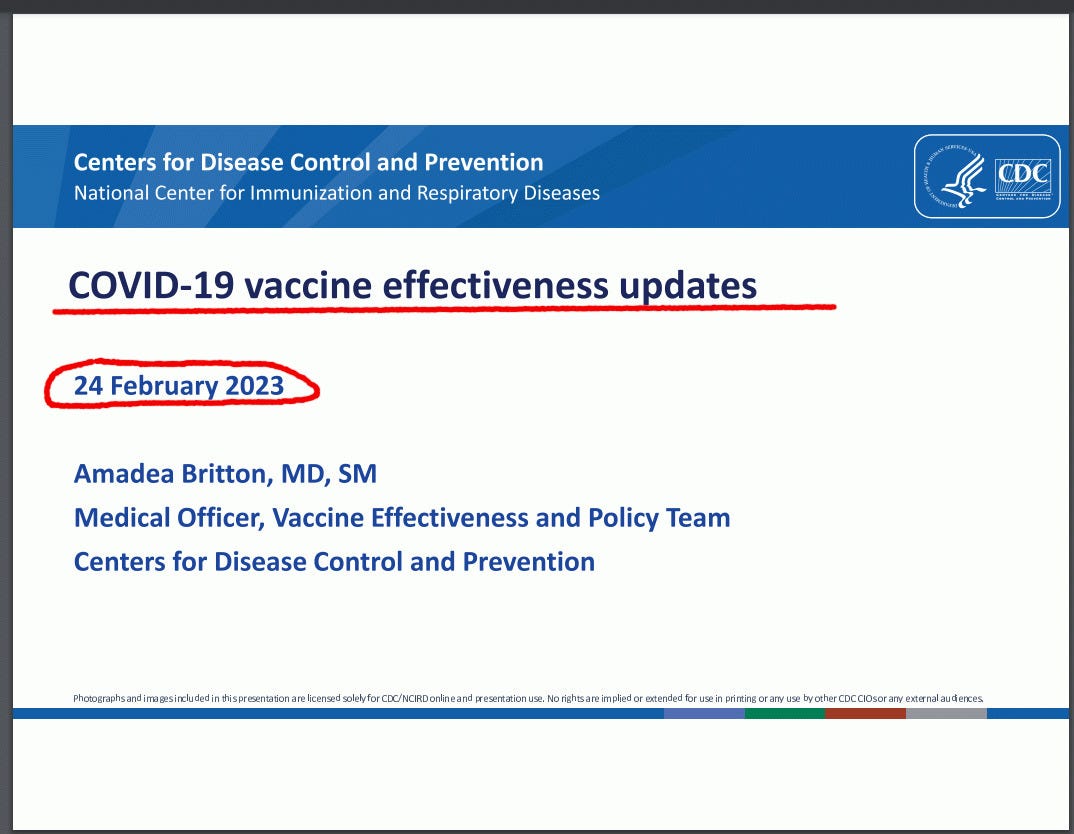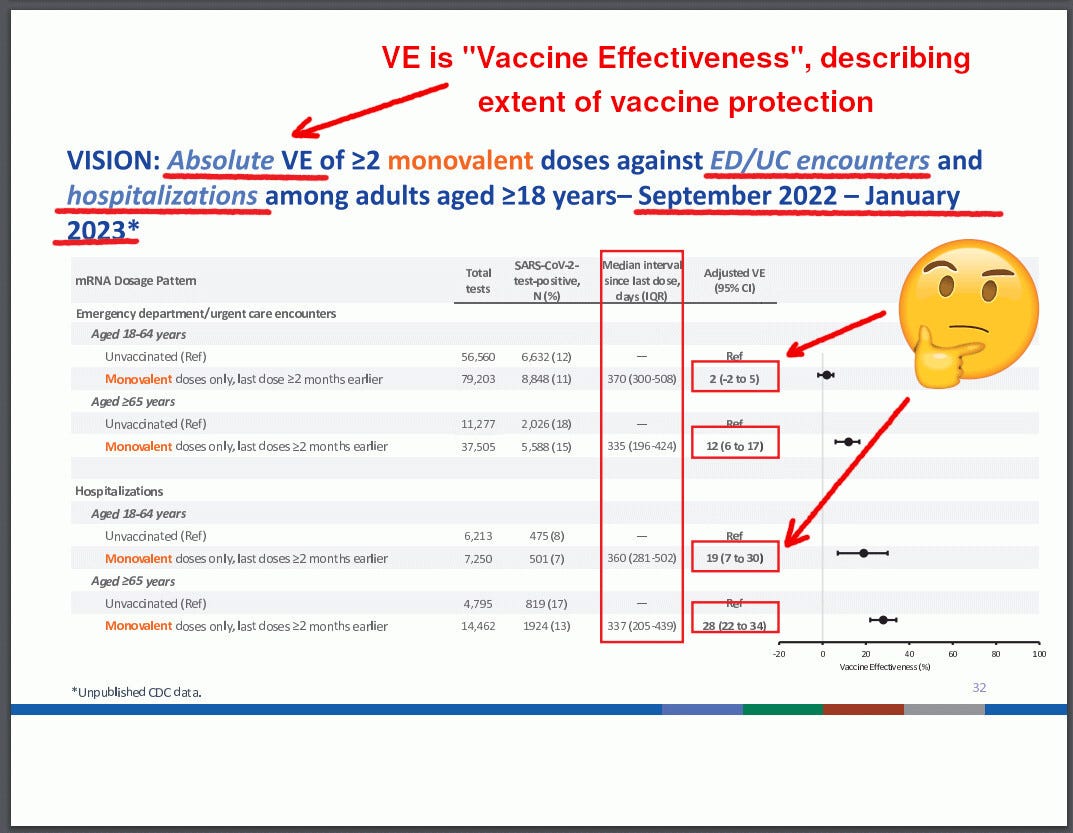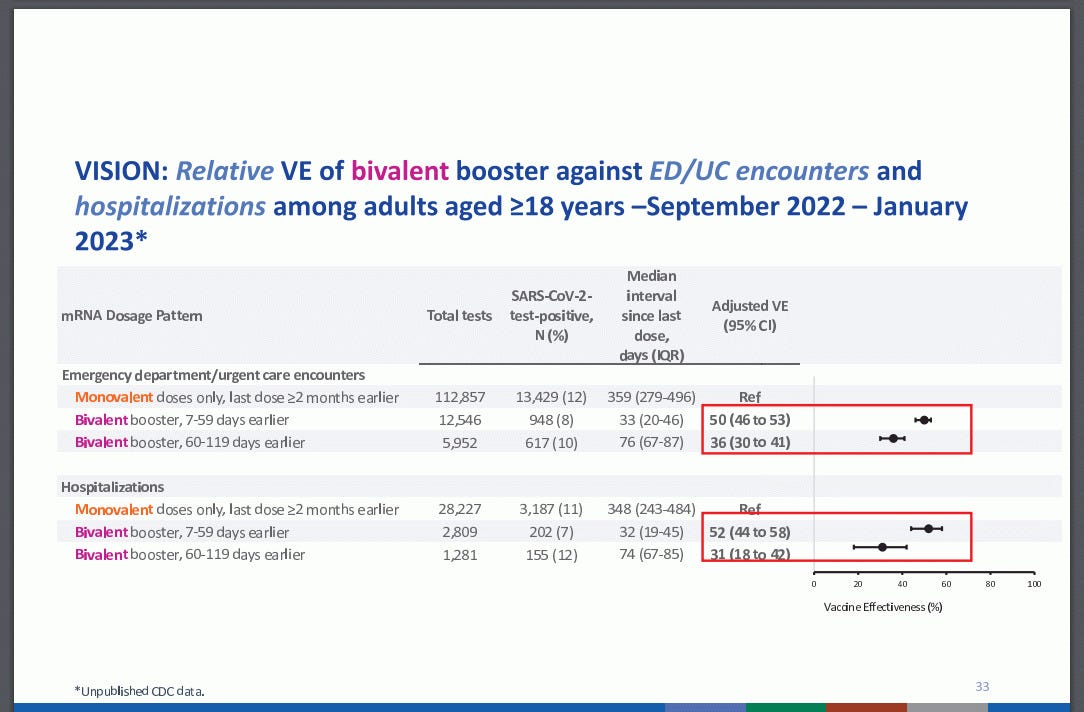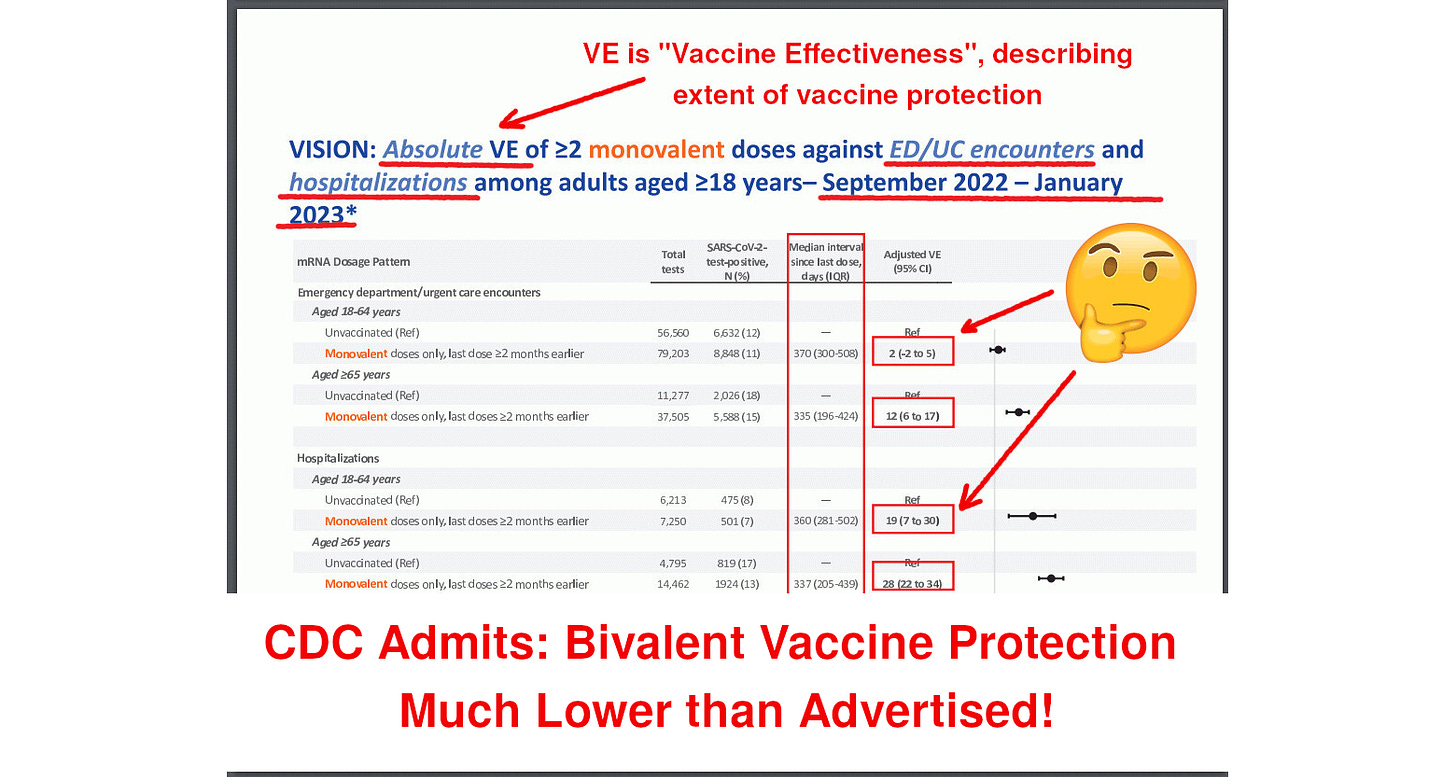Was the CDC Lying All Along About "Vaccine Effectiveness"?
A New Document Creates New Doubts
A new CDC presentation from two days ago provides some food for thought.
The presentation has a very interesting part called “VISION Multi-State Network of Electronic Health Records,” starting on Page 17.
This analysis is extremely important because it relies on a data set where patients have solidly documented vaccination status. This method of analyzing vaccine effectiveness does NOT depend on incorrect “estimates” of the percentage of unvaccinated people. Instead, the vaccination status of every individual is available via personal medical database records. In addition, the CDC scientists adjusted results by age and several other confounders.
The results are shocking. Here are the estimates of protection against HOSPITALIZATION from the original (monovalent) Covid vaccine. The extent of protection is called “vaccine effectiveness” and is abbreviated as VE.
For example, “protection against emergency visits” for 18-64-year-olds, given by the monovalent vaccine, was a measly 2 percent! Protection against COVID hospitalization for the same age group was only 19 percent!
Does this sound like a great deal of “severe illness protection”? It does not seem like it to me.
Maybe the bivalent booster, much touted by the CDC, would greatly help? The next slide dispels this notion. It shows “relative vaccine effectiveness (RVE).” Relative VE measures how much the bivalent booster helps, comparing monovalent-vaccinated people to bivalent-vaccinated people.
You can see that compared to those who declined the bivalent booster, people two months after having a bivalent booster would have hospitalizations reduced by only 31%.
This 31% is worse than it may seem: the bivalent boosted individuals are vaccine enthusiasts and are more likely to have had more previous doses than those who rejected the bivalents. Despite all these multiple doses, the chances of these enthusiasts being hospitalized for COVID are only reduced by 31% if we are to believe the CDC.
Not much.
Little Protection At Great Cost
Consider also that minor additional protection from COVID hospitalization comes at the cost of a greatly increased burden of non-Covid hospitalization or immediate vaccine side effects. This CDC presentation does not discuss this issue, but I want to remind you that the burden of vaccine side effects is very high!
The V-Safe registry reported in 2022 that 7.7% of all vaccinated people had to seek medical help immediately after COVID vaccines.
Is the CDC Not Telling Us the Truth?
Consider combining the two slides from the CDC document. A monovalent booster provides 19% protection for 18-64-year-olds (see the first slide). On top of monovalent vaccines, a bivalent booster adds 31% additional protection for 60-119 days after (last slide).
Combined Protection = 1-(100%-19%)*(100%-31%) = 1-0.81*0.69 = 1-0.5589 = 44%.
So, compared to unvaccinated people, according to the above CDC presentation, the protection of bivalent boosters against hospitalization for 18-64-year-olds is only 44%.
However, in its published publications, just two weeks ago, the CDC touts much higher protection:
Please help me understand: in the latest unpublished CDC document, bivalent boosted people 18-64 have only 44% protection against hospitalization, compared to unvaccinated people.
How can they be 14 times less likely to die if they are only 44% protected against hospitalization?
Is the CDC not being completely forthright with us?








No comments:
Post a Comment